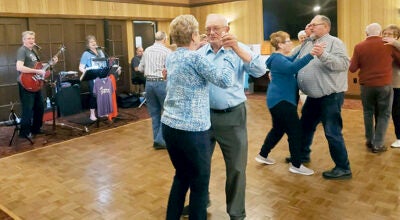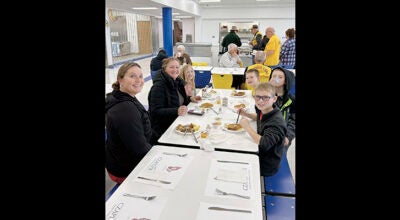ACES implements innovative literacy program
Published 7:04 am Thursday, February 11, 2010
Molly Garry, Molly Sheehan and Madeline Wolesky were having fun with the children’s book titled, “Don’t open this book,” Wednesday.
The three students in Jamie Docken’s first grade class at Austin Catholic Elementary were all giggles while huddled around a stereo, listening to the book through headphones.
The listening activity is part of the Daily Five literacy program implemented in Docken’s class this year.
The program, which includes stations of reading and writing activities, has proved so successful in her class, and in another fourth grade class, that the entire school is now adopting it.
The daily literacy stations are about 20 minutes long each and include reading to self, reading to someone, listening to reading, writing and word work. Students rotate through three stations of their choosing each day with their only requirement being to visit each station at least once per week.
“It works wonderfully,” said Docken, “And, it gives me a chance to pull small groups aside and work independently with them.”
A couple of students who had finished all of their Daily Five lessons were put to work crafting chapter books during this time, Docken pointed out. Another student, who had already written a chapter book, was creating a diorama in representation of a scene from the book.
“This way, we don’t loose the students who are at the bottom or the top. They are all working on just what they need to be working on,” Docken said.
In addition, Docken said, the students are happy and engaged because they have a choice in their activities.
“It’s individualized, independent learning,” she said. “For me as a teacher, it’s fun to see kids this young sitting and reading by themselves — and truly enjoying it.”
Daily Five is one of several new components of the literacy curriculum at ACES, said Billie Jo Wicks, director of admissions and teacher.
Also new this year is a subscription to “A to Z Reading,” an online program that allows teachers to print out books that are specific to individual students’ reading levels.
“This gives students books to take home right then and there, right at their level,” Wicks said.
“Sometimes, the biggest obstacle is getting them to love reading and putting those books in their hands.”
A new volunteer reading program has also been popular with students and the community this year.
Volunteers have been assigned to specific classes, working one-on-one with students through this program.
Other building blocks include visual phonics, that are taught to pre-schoolers and all elementary students; reading specialists and Title One teachers, who work with small groups daily; leveled reading tracking, in which each student is assessed and given an individualized reading goal in the fall; “Accelerated Reader” online programming and quizzes; weekly library classes; reading partnerships between elementary students and middle and high school students and a Read-a-Thon.
“We try to do a variety of things to encourage reading beyond the classroom walls…Reading has to become something they want to do, not something they need to do,” Wicks said.
Back in the first grade classroom, the three girls have completed listening to the story and want to hear it again.
“You see… The rat on the cover was telling us not to open the book,” Garry said.
“But we are really supposed to, to read along,” Sheehan interjected.
“And then at the end,” Wolesky managed to say through rolls of laughter, “It’s really all OK. It’s such a good, funny book!”



